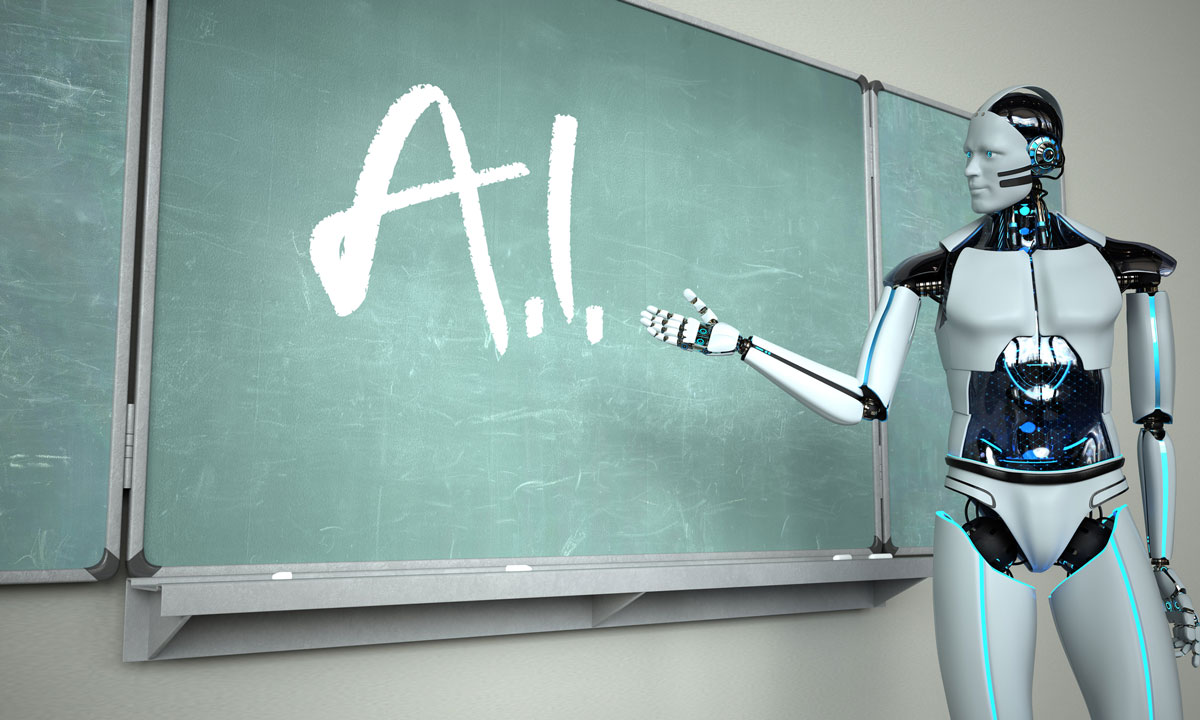Why the Rush toward Generative AI Literacy in K-12 Schools May Be Premature
Buher: The technology changes too fast, and hurried teaching materials may be of poor quality. Here are 5 steps toward a better approach.

Get stories like these delivered straight to your inbox. Sign up for The 74 Newsletter
The emergence of generative artificial intelligence is driving a movement to rapidly embed genAI literacy — the understanding and skills required to responsibly and effectively utilize these technologies — into the fabric of K-12 education. While this work is well-intentioned, aiming to prepare children for a tech-centric future, the challenge lies in discerning the appropriate timing, speed and manner of integrating genAI literacy, and ultimately, the technology itself into K-12.
One reason widespread genAI literacy in K-12 may be premature is the technology’s current state. The breakneck pace of development, coupled with underlying complexities and unknowns, makes it exceptionally challenging to provide evidence-based education. For instance, how genAI makes decisions remains a mystery, even to its creators. Anthropic CEO Dario Amodei, a leader in the field, recently suggested that genAI is “inherently unpredictable.” What’s more, the technology’s rapid advancement vastly exceeds the more measured pace of curriculum development and associated professional development necessary for high-quality instruction. This imbalance could put schools and districts at risk of constantly having to play catch-up with the skills and understanding needed to teach students how to use genAI responsibly, rather than concentrating on equipping them with a fundamental and lasting base of knowledge.
Second, an urgent push to incorporate genAI literacy in classrooms might lead to a low quality of tools, content and teaching as companies prioritize quickly getting their products to market over ensuring the rigor and educational integrity of their offerings.
Third, genAI literacy — even if focused on responsible adoption — implicitly suggests that the technology is safe for children. Putting aside doomsday hypotheticals — in a recent poll, 50% of genAI researchers said they believe there is a 10% or greater chance that humans will go extinct from our inability to control the technology — existing problems, such as false information and misinformation, deep fakes, bias and phishing, highlight the fact that none of the current major genAI models, including ChatGPT, Claude, Bard and Co-Pilot, are being built specifically with kids’ safety in mind.
Finally, the push for widespread genAI literacy may detract from more pressing priorities. These include, somewhat ironically, systematic preparation for the adoption of genAI to minimize future risks, as well as investments in fundamental subjects like literacy, mathematics, arts and physical education. It might also drain crucial resources supporting students’ social, emotional and mental well-being, which will be especially critical to preserve amid looming budget challenges.
Still, while acknowledging these concerns, it’s also crucial to recognize the potential of genAI. Given its saturation in the public consciousness, completely dismissing genAI literacy would be naive. Responsibly integrating genAI literacy and adopting the technology in K-12 education is the obligation of all stakeholders: parents, teachers, administrators, philanthropists and policymakers. Here are five considerations:
- K-12 stakeholders should approach rapid classroom-based genAI adoption with deep skepticism: Recognize the potential of genAI but approach its integration into schools with caution. Decades of ed tech underperformance suggest that the notion of “adopt or get left behind” may be misleading. Taking a skeptical stance toward genAI could help identify areas where the technology can benefit students and isolate potential risks, thus fostering a deliberate and principled approach to incorporating genAI literacy in classrooms.
- Schools should offer genAI literacy to high school students only: Incorporate genAI literacy into regular academic classes rather than free-standing lessons, with a specific focus on its safe use, ethical considerations and development of the skills necessary to evaluate the technology’s effectiveness at real-world problem solving and task completion. The cognitive maturity of students in grades 9 to 12 will allow for a deeper and more nuanced understanding of complex concepts such as ethics and safety in the context of rapidly evolving AI technologies, which younger students — while adaptable and tech-savvy — may not yet possess. Developing appropriate teaching tools for younger students and training educators accordingly will take time.
- Schools should continue to focus on timeless skills: The shape of future job markets impacted by genAI is largely unknowable — remember predictions about the inevitable death of blue-collar jobs from artificial intelligence? So it is prudent to continue focusing on skills essential in a world where the only predictable constant is change: critical thinking, problem-solving, adaptability and ethical reasoning, as well as newer areas such as computational thinking.
- Philanthropy should focus on understanding and mitigating risks associated with genAI adoption: Funding should prioritize concerns about safety, privacy and well-being. Answering fundamental questions that can make genAI literacy more robust and rigorous should be the current focus. For instance, how will technology impact children’s sense of self? How will it impact cognition in young people? What systems must be built and data collected to determine the appropriate age to introduce classroom-based genAI tools?
- Philanthropy and policymakers must empower adults: One clear lesson from the social media experiment over the last decade is that adults must protect young people from the risks associated with new technologies. To do so, they need to understand those risks with nuance. GenAI literacy should be offered to educators, parent-teacher associations and professional organizations, among others, to equip adults with the knowledge necessary to safeguard young people and advocate on their behalf.
The sensible way forward is to focus on a balanced approach that prepares children for the future without overwhelming or misdirecting their learning experiences in the classroom.
Get stories like these delivered straight to your inbox. Sign up for The 74 Newsletter


